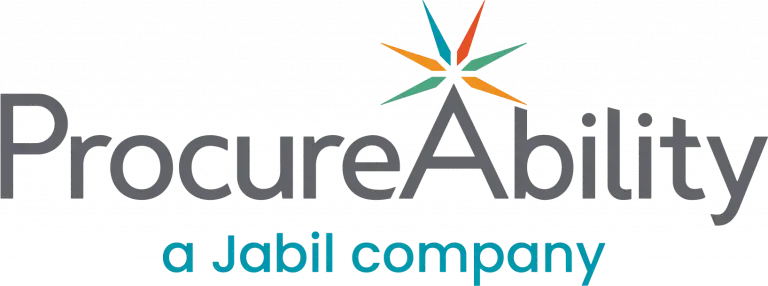Chief Procurement Officers (CPOs) continually strategize and plan for upcoming organizational goals. They do this while striving to meet current objectives. The evolving macro-environment has expanded the role, responsibilities, and priorities of the CPO. This increases expectations for their team’s contribution to the business’s bottom line. Key priorities often include cost savings, operational efficiency, emerging technologies, supply chain resilience, sustainability, and more.
These expanded responsibilities make achieving objectives more complex than in previous periods. Additionally, tighter financial conditions and global uncertainty add layers of complexity as CPOs develop and execute strategic plans.
In this Featured Insights, ProcureAbility shares guidance on how CPOs can methodically address current challenges. They can do this while laying the foundation for transformative change.
Introduction
CPOs face a variety of challenges in meeting organizational goals amid financial, geopolitical, and technological disruptions. Expectations continue to rise for delivering cost savings and strategic value. Some of the core challenges include:
Strategic Action Plan
To help CPOs address these challenges while meeting their goals, ProcureAbility has developed a seven-step action plan with an emphasis on prioritization, broken down to confront near-term pressures and longer-term, transformational initiatives.
Actions
-
01
Project pipeline development
- Conduct a review of your current pipeline of active and planned sourcing projects to estimate the magnitude and timing of potential savings and other value-added impacts and compare those estimates with your 2024 savings targets to understand gaps.
- Initiate opportunity assessment efforts focusing on spend analysis, market assessments and stakeholder validations to further identify potential strategic sourcing and supply chain improvement opportunities that will address gaps in savings and other value-added impacts.
-
02
Multi-level engagement with business teams
- Identify key business stakeholders/buying decision makers across functions and at multiple levels of your organization and set up regular engagements to understand their business needs, priorities, and plans for 2024 and beyond.
- Leverage these meetings to validate savings and other valuable opportunities identified during the project pipeline development step.
-
03
Supply risk and supplier relationship management
- Conduct a deep-dive assessment (utilizing frameworks such as the Kraljic Matrix4) of your current supply base to identify key/strategic suppliers and any risks to the continuity of supply for the products/services procured from these suppliers.
- Develop mitigation plans to manage supply risks, such as strengthening relationships with your key suppliers to ensure continuity, and developing new sources of supply through focused supplier development efforts that reduce supply risk caused by geopolitical or supplier-specific disruptions, keeping in mind critical factors like geographic location and security of trade routes.
Transformational Actions
Procurement organization enhancement
- Review your current organizational structure and governance model while considering changes to your existing structure and operating model that would better address your current business needs, improve the efficiency and speed of tactical procurement processes, and enabling increased focus on strategic sourcing and category management efforts.
- Identify your resource and skills gaps of current procurement personnel to effectively lead category management, sourcing strategy and negotiation efforts, and develop hiring and training plans to address them5.
Policy and procedures alignment
- Review your current procurement policies and procedures to improve their efficiency and ensure they are aligned with the changing needs of the business. Look to refresh or update policies for matters such as approval/signature thresholds, competitive bid requirements, small or diverse supplier usage, and procurement engagement requirements.
Procurement technology roadmap
- Assess your current procurement technology stack to better understand their effectiveness in supporting your existing procurement processes, and your team’s current needs and vision for the future.
- Develop a multi-year roadmap for technology changes/updates to improve the speed, efficiency and effectiveness of your team by potentially addressing areas such as category management, sourcing/negotiation process, procurement operations, contract lifecycle management, spend analysis, marketing intelligence and benchmarking (see ProcureAbility’s Five Bold Procurement Predictions for 2030). Explore various technologies including AI and machine learning offerings to assess their applicability while developing your technology roadmap.
ESG programs
- Address your organization’s ESG goals by establishing a robust ESG program6 for your procurement team, focusing on current state assessment, metrics, baseline and targets, action plan development, communication, and progress measurement.
- Establish SMART goals that are Specific, Measurable, Achievable, Relevant, and Time-Bound. Be ambitious and make sure to create these goals as a team to ensure buy-in and accountability.
Taking the next step: Finding dedicated resources
Every procurement organization is unique–some will be further along than others on the maturity spectrum across any number of these dimensions.
We’ve found that one of the best ways to quickly appraise current state capabilities is for CPOs to establish so-called “tiger teams”. These teams are tasked with advancing and steering these initiatives. Teams can be comprised of internal resources with relevant experience or third-party/outside experts. These experts specialize in producing quick-hitting results, longer-term transformations, or a combination of both. They tend to focus on performing gap and maturity assessments. These assessments identify and advise on the most impactful areas for CPOs to focus on during their planning process.
Contributors
Kathleen M. Pomento, Senior Director, ProcureAbility
Sources
1Collaboration creates transparency
2A human-centered approach to managing relationships with suppliers
3Agility in motion procurement operating model design
4Kraljics matrix4: drivers of category management strategy
5Recruiting top talent in a competitive market: Attractingtop procurement talent





